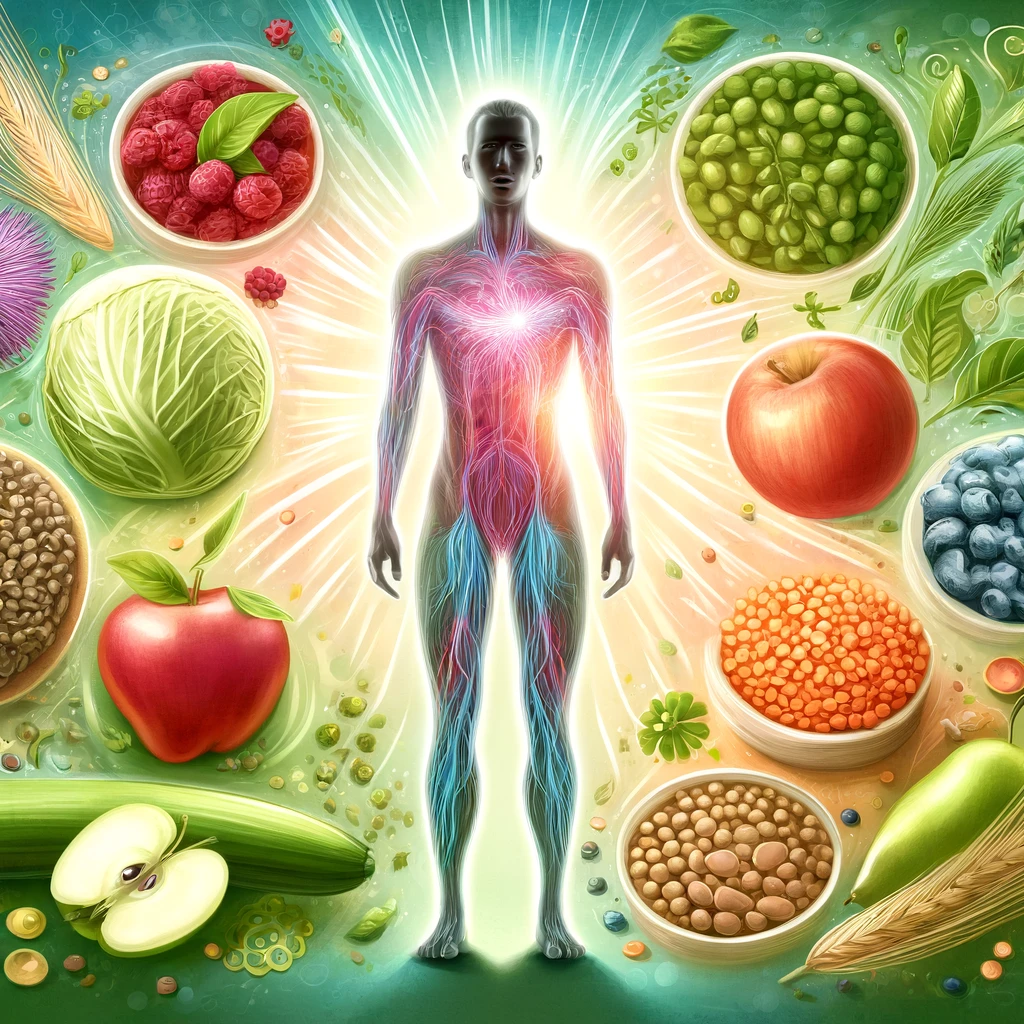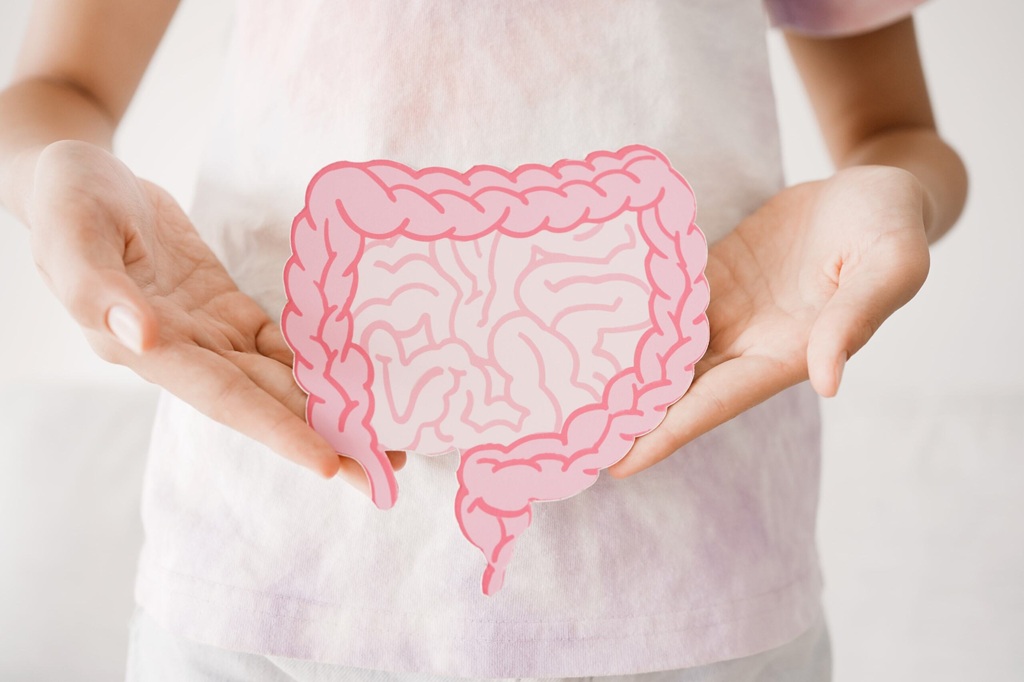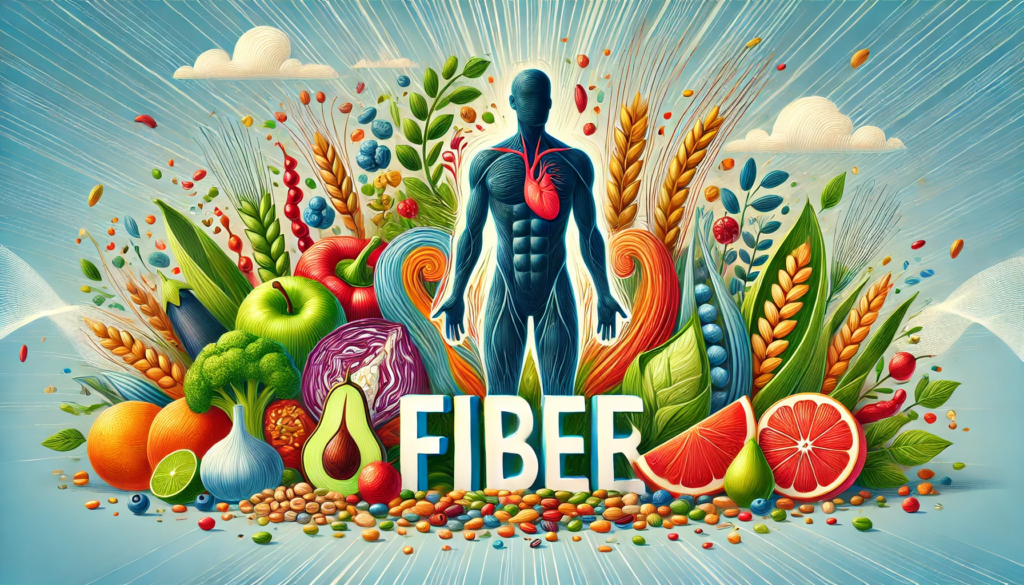Le fibre non sono solo buone per la digestione, ma aiutano tutto il corpo a rimanere in salute. Gli studi sui topi hanno dimostrato che una dieta molto povera di fibre può portare a problemi come la glicemia alta e la resistenza all’insulina. Questo accade perché i batteri buoni nell’intestino si nutrono di fibre. Quando non ne hanno abbastanza, non riescono a tenere sotto controllo l’infiammazione, il che può aumentare il rischio di malattie cardiache e alcuni tipi di cancro.

La fibra è un tipo di carboidrato che aiuta la digestione, la gestione del peso e riduce il rischio di molte malattie.
Perché la fibra è importante:
- Feeds Good Bacteria: Fiber is food for the healthy bacteria in your gut. When these bacteria thrive, they help reduce inflammation in your body.
- Helps Control Blood Sugar: Eating enough fiber can help keep your blood sugar steady.
- Reduces Health Risks: A good fiber intake may lower the risk of heart disease and certain types of cancer.
Digestione

- Fiber helps with digestion by moving food through the digestive tract.
- Fiber helps prevent constipation by adding bulk to stool.
- Fiber feeds beneficial gut bacteria.
Gestione del peso
- Fiber helps you feel full for longer.
- Fiber can help you maintain a healthy weight.
Prevenzione delle malattie
- Fiber can help reduce the risk of heart disease, stroke, type 2 diabetes, and some cancers.
- Fiber can help lower blood cholesterol.
- Fiber can help regulate blood sugar levels.
Altri vantaggi
- Fiber can help with immune function.
- Fiber can help fight inflammation.
- Fiber can help suppress tumor growth in the colon.
Di quanta fibra hai bisogno?
- Most people only get about 16 grams a day.
- Experts recommend at least 25 grams of fiber daily.
Tipi di fibra
Esistono due tipi principali di fibre ed entrambe sono importanti per la salute:
1. Fibra solubile
- What It Does: Soluble fiber dissolves in water and forms a gel-like substance during digestion. This gel helps slow down digestion, which can be beneficial for controlling blood sugar and cholesterol levels.
- Good Sources: Oats, apples, citrus fruits, beans, lentils, and psyllium.
2. Fibra insolubile
- What It Does: Insoluble fiber does not dissolve in water. Instead, it adds bulk to your stool and helps food pass more quickly through the digestive system, which can prevent constipation.
- Good Sources: Whole grains, nuts, and many vegetables such as cauliflower, green beans, and potatoes with the skin on.
Tip: Mangiare un mix di fibre solubili e insolubili può aiutarti a godere dei benefici di ciascuna.
I migliori alimenti per le fibre
Per raggiungere il tuo obiettivo giornaliero di fibre, cerca di includere questi alimenti ricchi di fibre nei tuoi pasti:
- Fruits: Berries, apples, and oranges.
- Vegetables: Broccoli, spinach, carrots, and green beans.
- Legumes: Lentils, black beans, split peas, and chickpeas.
- Whole Grains: Oats, brown rice, whole wheat bread, and quinoa.
- Nuts and Seeds: Almonds, chia seeds, and flaxseeds.
Example: Una tazza di lenticchie o fagioli può fornire circa 15 grammi di fibre!
Suggerimenti rapidi per aumentare l’assunzione di fibre
- Start your day with a high-fiber breakfast: Consider oatmeal topped with berries.
- Snack smart: Choose fruits, vegetables, or a handful of nuts.
- Add legumes to your meals: Try including beans or lentils in salads, soups, or casseroles.
- Switch to whole grains: Replace white bread or rice with whole-grain versions.
Aggiungendo una varietà di questi alimenti alla tua dieta, puoi aiutare a sostenere la tua salute generale godendo dei numerosi benefici che le fibre hanno da offrire.


